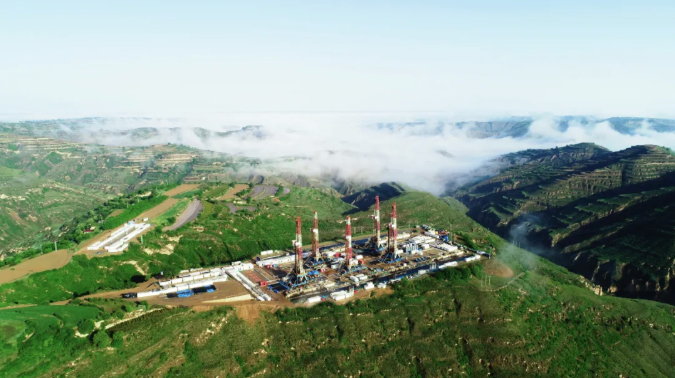
On November 9, joyous news came from Changqing Oilfield, China’s largest shale oil production base—its cumulative shale oil production has exceeded 20 million metric tons. This milestone marks a major achievement in China’s “shale revolution” and signifies that continental shale oil has entered a new phase of scaled and cost-effective development.
Against the backdrop of the accelerating global energy transition and in line with the requirements of the “Four Revolutions and One Cooperation” energy security strategy, shale oil, as a crucial component of unconventional oil and gas resources, plays a significant role in ensuring national energy security through its efficient development. Jia Chengzao, an academician of the Chinese Academy of Sciences, stated that shale oil represents an important alternative area for promoting the increase and stabilization of domestic crude oil production.
Shale oil is characterized by low permeability and poor fluidity, making it notoriously difficult to extract—a consensus within the industry. The shale oil explored and developed by Changqing Oilfield is located in the Ordos Basin. Its reservoir layers generally have a single-layer thickness of less than 5 meters and are buried more than 2,000 meters underground. The permeability is only about one-thousandth of that of conventional oilfields in China, and the radius of its primary flow pathways is approximately 1/30th the diameter of a human hair. These conditions make seismic exploration and reservoir fracturing extremely challenging, earning it the reputation of being “the toughest of the tough.” Conventional extraction techniques are ineffective in such conditions.
To tackle these challenges, under the National Science and Technology Major Project, Changqing Oilfield has conducted 128,000 laboratory experiments and deployed over 80 field pilot tests. Breakthroughs have been successively achieved in the theories, technologies, and development models for shale oil exploration and production.
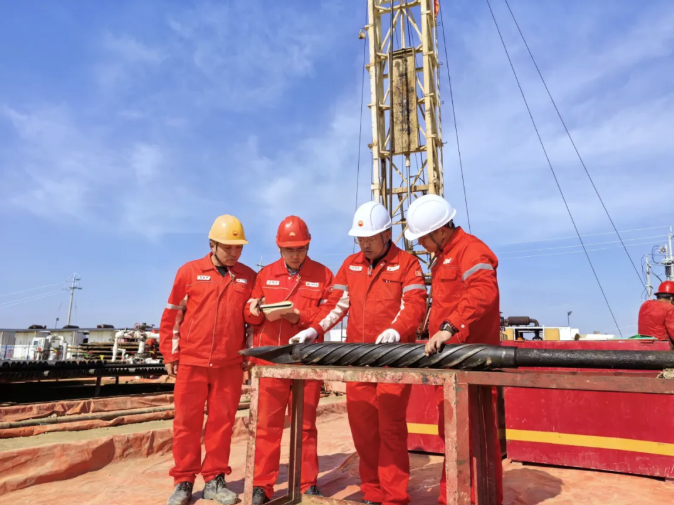
▲Technical personnel conducted a collaborative diagnosis of complex shale oil wellbore issues
Strengthening theoretical research to address the fundamental question of “whether resources are abundant and where they are concentrated.” Changqing Oilfield has deepened the study of shale oil accumulation mechanisms and enrichment patterns, establishing the theoretical understanding of “coexistence of source and reservoir” in the continental shale sequences of the basin. This breakthrough successfully deciphered the scientific principles behind “oil generation” and “oil storage” in continental shale, unlocking the Qincheng shale oil field with reserves exceeding 10 billion tons and opening up the rich treasure of shale oil resources in the Ordos Basin.

▲Changqing Oilfield Establishes CO₂ Huff-n-Puff Energy Replenishment Demonstration Zone
In 2018, after the formal establishment of the Shale Oil Production Capacity Building Project Team at Changqing Oilfield, it not only accelerated the production and construction of shale oil but also spearheaded the creation of China’s first large-scale underground hydraulic fracturing scientific test site for shale oil. In this process, the oilfield established a shale oil volume fracturing development technology for horizontal wells, centered on “fracture creation, preemptive energy enhancement, and imbibition replacement.” Additionally, it independently developed 12 key core technologies, including dissolvable metal ball seats and multi-functional fracturing fluids. The successful application of these technologies significantly boosted single-well production, increasing it from 1.5 tons to 18 tons, thereby constructing efficient “blood vessels” and a “heart” for the development of “dormant” oil reservoirs.
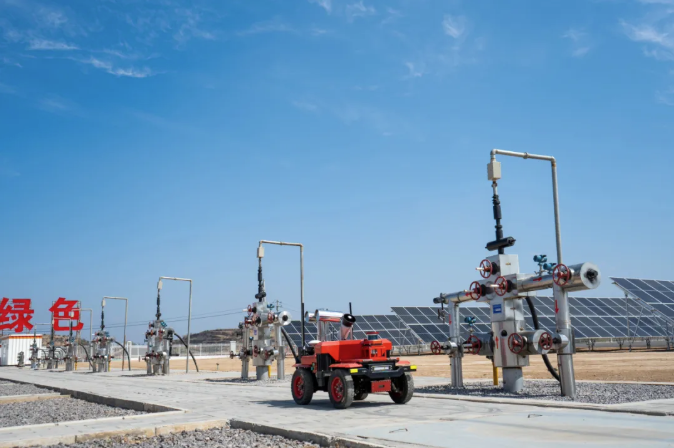
▲ Robots are performing inspections on the oil production platform.
Changqing Oilfield has consistently advanced the “shale revolution” with high quality, pioneering a development model characterized by “cluster drilling of horizontal wells, modular skid-mounted station assembly, diversified associated gas co-production, and digitalized unmanned operations.” It has set a world record for the longest horizontal section exceeding 5,000 meters and an Asian record for deploying 31 horizontal wells from a single platform. Meanwhile, with the successive deployment of China’s first shale oil IoT cloud platform and the largest UAV swarm inspection system, labor requirements per million tons of output have been reduced by 80%, establishing it as the country’s first successful case of scaled and cost-effective shale oil development.
In 2024, Changqing Oilfield’s annual shale oil output accounted for more than half of China’s total shale oil production, establishing it as the country’s primary shale oil production base. Since the beginning of this year, shale oil production and construction have continued to accelerate. To date, 144 shale oil horizontal wells have been completed, with shale oil production exceeding 3 million metric tons. The daily production rate has surpassed 10,000 metric tons for the first time, setting a new national record.
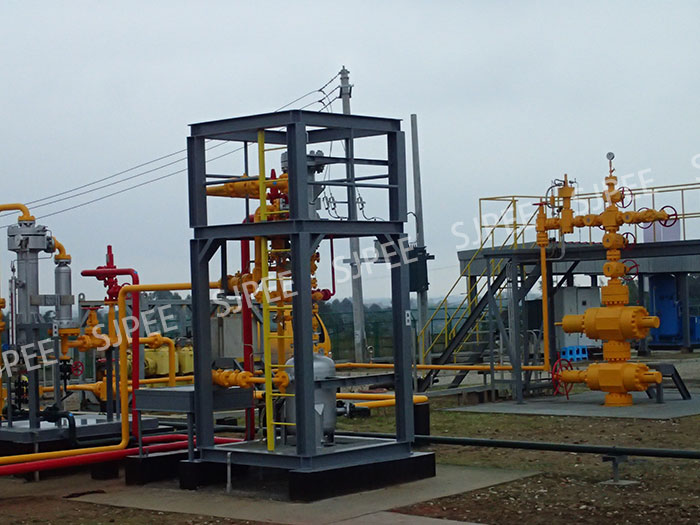
Shale gas production requires essential sand removal equipment like desanders.
Shale gas desanding refers to the process of removing solid impurities such as sand grains, fracturing sand (proppant), and rock cuttings from shale gas streams (with entrained water) through physical or mechanical methods during shale gas extraction and production.
As shale gas is primarily obtained through hydraulic fracturing technology (fracturing extraction), the returned fluid often contains large amounts of sand grains from the formation and residual solid ceramic particles from fracturing operations. If these solid particles are not completely separated early in the process flow, they would cause severe erosion to pipelines, valves, compressors and other equipment, or lead to pipeline blockages in low-lying sections, clogging of instrument pressure guide pipes, or trigger production safety incidents.
SJPEE’s shale gas desander delivers exceptional performance with its precision separation capability (98% removal rate for 10-micron particles), authoritative certifications (DNV/GL-issued ISO certification and NACE anti-corrosion compliance), and long-lasting durability (featuring wear-resistant ceramic internals with anti-clogging design). Engineered for effortless efficiency, it offers easy installation, simple operation and maintenance, along with extended service life – making it the optimal solution for reliable shale gas production.
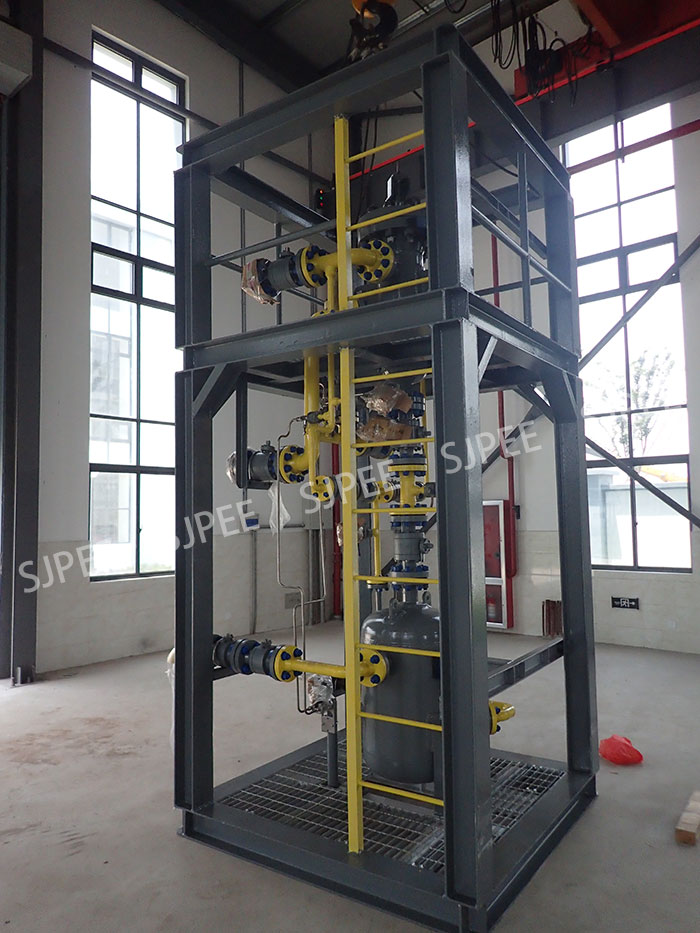
Our company is continuously committed to developing more efficient, compact, and cost-effective desander while also focusing on environmentally friendly innovations.
Our desanders come in a wide variety of types and have extensive applications. In addition to shale gas desanders, such as High-efficiency Cyclone Desander, Wellhead Desander, Cyclonic Well stream crude Desander With Ceramic Liners, Water injection Desander,Natural Gas Desander, etc.
SJPEE’s desanders have been used on wellhead platforms and production platforms in gas and oil fields such as CNOOC, PetroChina, Malaysia Petronas,Indonesia, the Gulf of Thailand, and others. They are used to remove solids in gas or well fluid or produced water, as well as seawater solidification removal or production recovery. Water injection and water flooding to increase production and other occasions.
This premier platform has positioned SJPEE as a globally recognized solution provider in solid control & management technology. We always prioritize our customers’ interests and pursue mutual development with them.
Post time: Nov-18-2025
